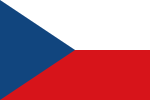Czechoslovak Socialist Republic

The Czechoslovak Republic (Czech: Československá republika, Slovak: Československá republika) or Fourth Czechoslovak Republic existed between 1948 and 1960 in Czechoslovakia. Czechoslovak Socialist Republic (Czech and Slovak: Československá socialistická republika, ČSSR) was the official name of the country from 1960 to 23 April 1990. From 1948 until the end of November 1989, the country was under Communist rule and was a satellite state of the Soviet Union.Following the coup d'état of February 1948, when the Communist Party of Czechoslovakia seized power with the support of the Soviet Union, the country was declared a socialist republic when the Ninth-of-May Constitution became effective. The traditional name Československá republika (Czechoslovak Republic), along with several other state symbols, were changed on 11 July 1960 following the implementation of the 1960 Constitution of Czechoslovakia as a symbol of the "final victory of socialism" in the country. In April 1990, shortly after the Velvet Revolution of November 1989, the Czechoslovak Socialist Republic was renamed to the Czech and Slovak Federative Republic.
Excerpt from the Wikipedia article Czechoslovak Socialist Republic (License: CC BY-SA 3.0, Authors, Images).Czechoslovak Socialist Republic
Konviktská, Prague Old Town
Geographical coordinates (GPS) Address Nearby Places Show on map
Geographical coordinates (GPS)
| Latitude | Longitude |
|---|---|
| N 50.083333333333 ° | E 14.416666666667 ° |
Address
Fakulta dopravní ČVUT (České vysoké učení technické v Praze - FD)
Konviktská
116 65 Prague, Old Town
Prague, Czechia
Open on Google Maps










